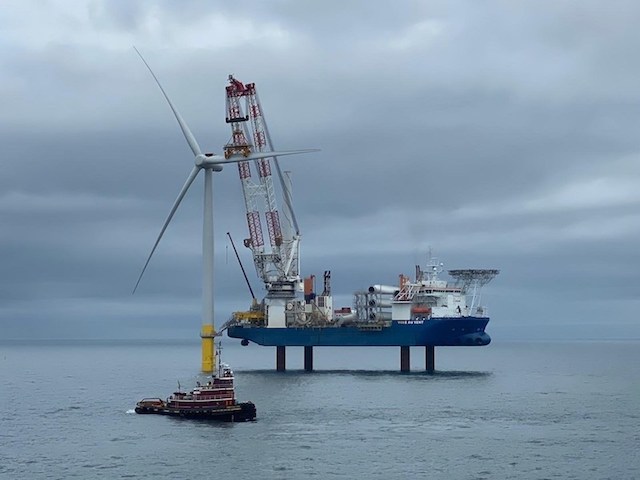Within a decade, the Gulf of Mexico shelf could generate cost-competitive wind energy with two sites off Texas and another off the Florida coast. These are seen as the most likely landing spots for inaugural offshore wind farms in the Gulf, according to a government study.
Following a two-year-long investigation, the National Renewable Energy Laboratory (NREL) concluded that offshore wind generation from shallow Gulf waters will be economically viable by 2030. Results of the two-phase analysis, which was funded by the Bureau of Ocean Energy Management (BOEM), were released in May.
The first phase of the study examined renewable energy prospects in the Gulf before identifying wind as the most viable, both economically and technically. A subsequent site-specific analysis settled on Port Isabel and Port Arthur in Texas and Pensacola, Fla., as best for meeting the cost and related criteria for what would be the nation’s southernmost commercial offshore wind projects. The Block Island Wind Farm off Rhode Island is currently the only commercial offshore wind facility generating electricity in the U.S.
Among the engineering gaps identified, turbine blades would have to be engineered to optimize energy capture in a relatively low sustained wind environment, while any shelf-based wind farm must be designed to withstand tropical storm and hurricane conditions. According to BOEM, a key differentiator for Gulf Coast wind energy is the extensive labor and supply-chain infrastructure already in place to support the offshore oil and gas sector. This network can address the unique demands of wind energy.
To point, Gulf Island Fabrication, Houma, La., fabricated the five jacket/piles for the shallow-water Block Island project, with idled Gulf of Mexico liftboats handling the installation.
GE Renewable Energy operates an onshore wind turbine assembly plant in Pensacola, while its LM Wind Power entity opened a technology center on the NASA Michoud campus outside of New Orleans in 2018 to design and test wind turbine blades.
“As we seek to diversify the U.S. energy supply using ocean renewable resources, we are finding that the existing oil and gas industries in the Gulf are able to leverage their vast ocean-based capabilities to expand their businesses and capitalize on these new energy opportunities,” NREL researcher and lead author Walt Musial said on May 6.





